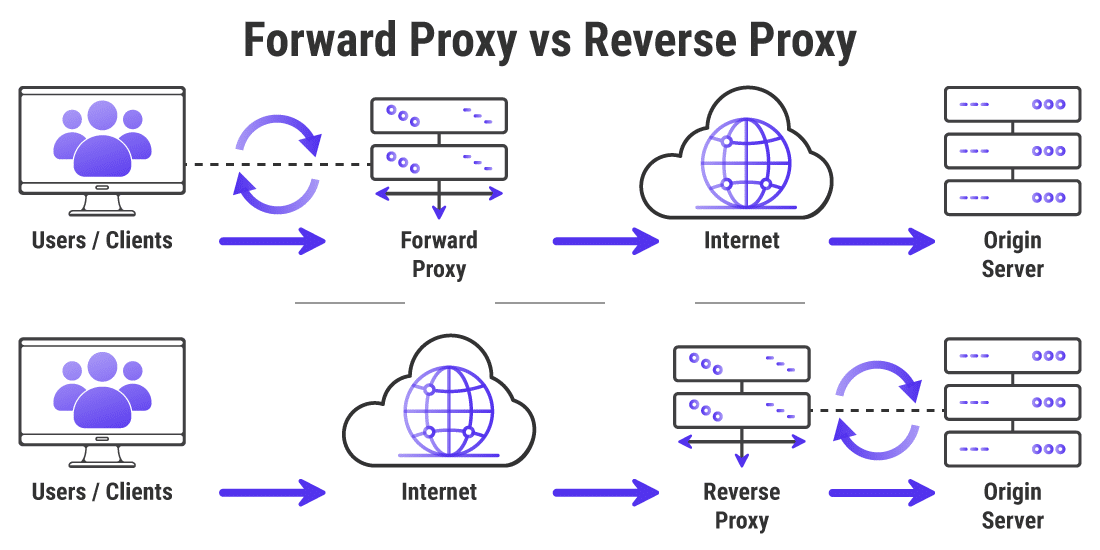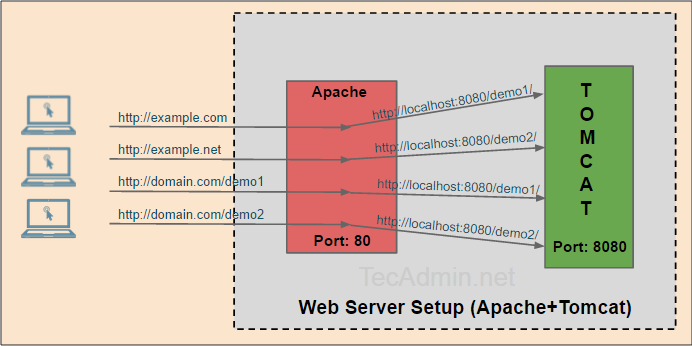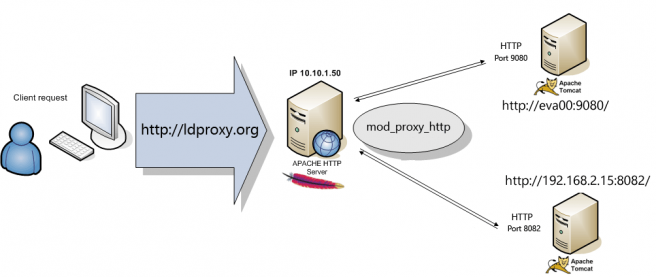


A proxy server is a gateway for users to the Web at large. Users configure the proxy in their browser settings, and all HTTP requests are routed via the proxy. Proxies are typically operated by ISPs and network administrators, and serve several purposes: for example,
- to speed access to the Web by caching pages fetched, so that popular pages don't have to be re-fetched for every user who views them.
- to enable controlled access to the web for users behind a firewall.
- to filter or transform web content.
- Ports 80 (http) and 443 (https) have been forwarded from your external ip to an internal server at 10.1.1.2 which will handle the reverse proxy and SSL/TLS work using letsencrypt You have other application web servers listening on port 80 on your internal LAN at 10.1.1.11 and 10.1.1.12 but these are not accessible from outside your network.
- The most common case of Apache Reverse Proxy is to use the apache server as a reverse proxy for a Node.js or Dotnet server. Here the Apache server receives the request from the users using the external IP at port 80 and forwards the request to the Node or Dotnet server in the port 3000 or 5000 respectively.
Forward Proxy Vs Reverse Proxy
In addition to being a 'basic' web server, and providing static and dynamic content to end-users, Apache httpd (as well as most other web servers) can also act as a reverse proxy server, also-known-as a 'gateway' server.
This page describes how to integrate Apache HTTP Server (also referred to as httpd) with Jira, utilizing modproxyajp so that Apache operates as a reverse-proxy. AJP is a wire protocol and is an optimized version of the HTTP protocol to allow a standalone web server such as Apache to talk to Tomcat.

In such scenarios, httpd itself does not generate or host the data, but rather the content is obtained by one or several backend servers, which normally have no direct connection to the external network. As httpd receives a request from a client, the request itself is proxied to one of these backend servers, which then handles the request, generates the content and then sends this content back to httpd, which then generates the actual HTTP response back to the client.
Apache Ssl Reverse Proxy
There are numerous reasons for such an implementation, but generally the typical rationales are due to security, high-availability, load-balancing and centralized authentication/authorization. It is critical in these implementations that the layout, design and architecture of the backend infrastructure (those servers which actually handle the requests) are insulated and protected from the outside; as far as the client is concerned, the reverse proxy server is the sole source of all content.
Apache Reverse Proxy Http To Https Gmail
A typical implementation is below:
